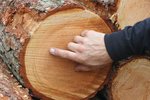A selective timber harvest near Chimacum Park is well underway as crews work to thin the densely clustered stands of trees in order to promote a healthier understory.
Justin Melton, who runs the …
This item is available in full to subscribers.
We have recently launched a new and improved website. To continue reading, you will need to either log into your subscriber account, or purchase a new subscription.
If you had an active account on our previous website, then you have an account here. Simply reset your password to regain access to your account.
If you did not have an account on our previous website, but are a current print subscriber, click here to set up your website account.
Otherwise, click here to view your options for subscribing.
* Having trouble? Call our circulation department at 360-385-2900, or email our support.
Please log in to continue |
|


A selective timber harvest near Chimacum Park is well underway as crews work to thin the densely clustered stands of trees in order to promote a healthier understory.
Justin Melton, who runs the Sedro-Wooley-based North Hills Logging, said work was coming right along early last week as he charged up a low battery on one of his John Deere timber harvesters.
Melton said the spacious area surrounding the log landing, off of Old Anderson Lake Road, has allowed him to stage his two John Deer timber harvesters, a log loader, forwarder, log truck, trailer, camper and various other work trucks all onsite.
He said the change was a welcome one, since he usually is forced to tuck his equipment away along the skid trails where he’s working.
Gesturing over to a stack of logs beside the loader, Melton drew attention to the unusually tight grain of some of the smaller trees. Counting the annual rings, some of the logs show signs of scarcely a half-inch of growth over a span of 15 or 20 years.
Melton said the rings told the story of established trees that had nearly ceased significant growth entirely and some smaller trees that had fought to get what little light still penetrated through the thick crown of the forest.
The issue at hand is not unusual and seems symptomatic of some working forests all across Washington: too many trees packed too closely, in hopes of increasing profits come harvest time.
What grows instead are the costs of over-planting.
“We’ve got to ask ourselves, ‘Why are we in here?’” Melton said. “Because it’s not healthy.”
Stands of timber all across the U.S. have been plagued by a lack of adequate management, Melton said. While hesitant to cast blame in any one direction, he noted that the timber market’s prices often dictate further inaction for foresters who would prefer to put off harvesting until prices for their respective trees become more favorable.
As the western U.S. continues to battle wildfires without historic equivalent, Melton also pointed to the loss of timber infrastructure in recent years.
With mills becoming fewer and farther between, increased transportation costs for timber only serve to fuel foresters’ aversion to intensely managing their forests. But Jefferson County will not be following suit.
Melton explained his strategy for opening up the dimly lit understory.
“They call it thinning from the bottom. You’re looking up to the crown [of the tree]; you don’t want any crowns touching. If they’re touching, no sun can get through,” he explained.
Melton estimated that in two years’ time, visitors to the area will find a much healthier understory. “We’re giving the forest the best chance that it can have to grow healthy and mature.”
Asked about the public perception of his work, Melton acknowledged some residents wonder about logging operations in the places they frequent.
“You’re interrupting their process; some people have been hiking that trail for a long time and you’ve just bumped them out,” Melton said.
“Most people, even the naysayers, will come back and say ‘I like it, this looks good,’” he added.